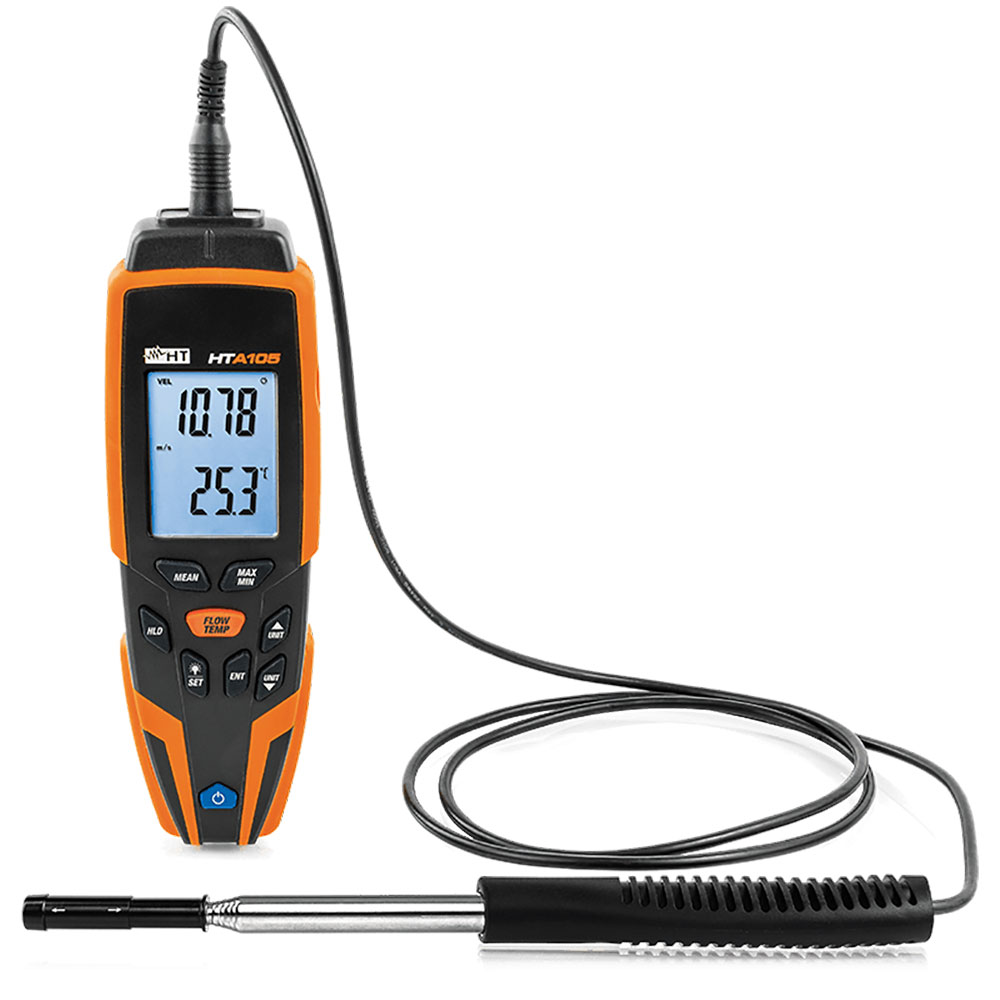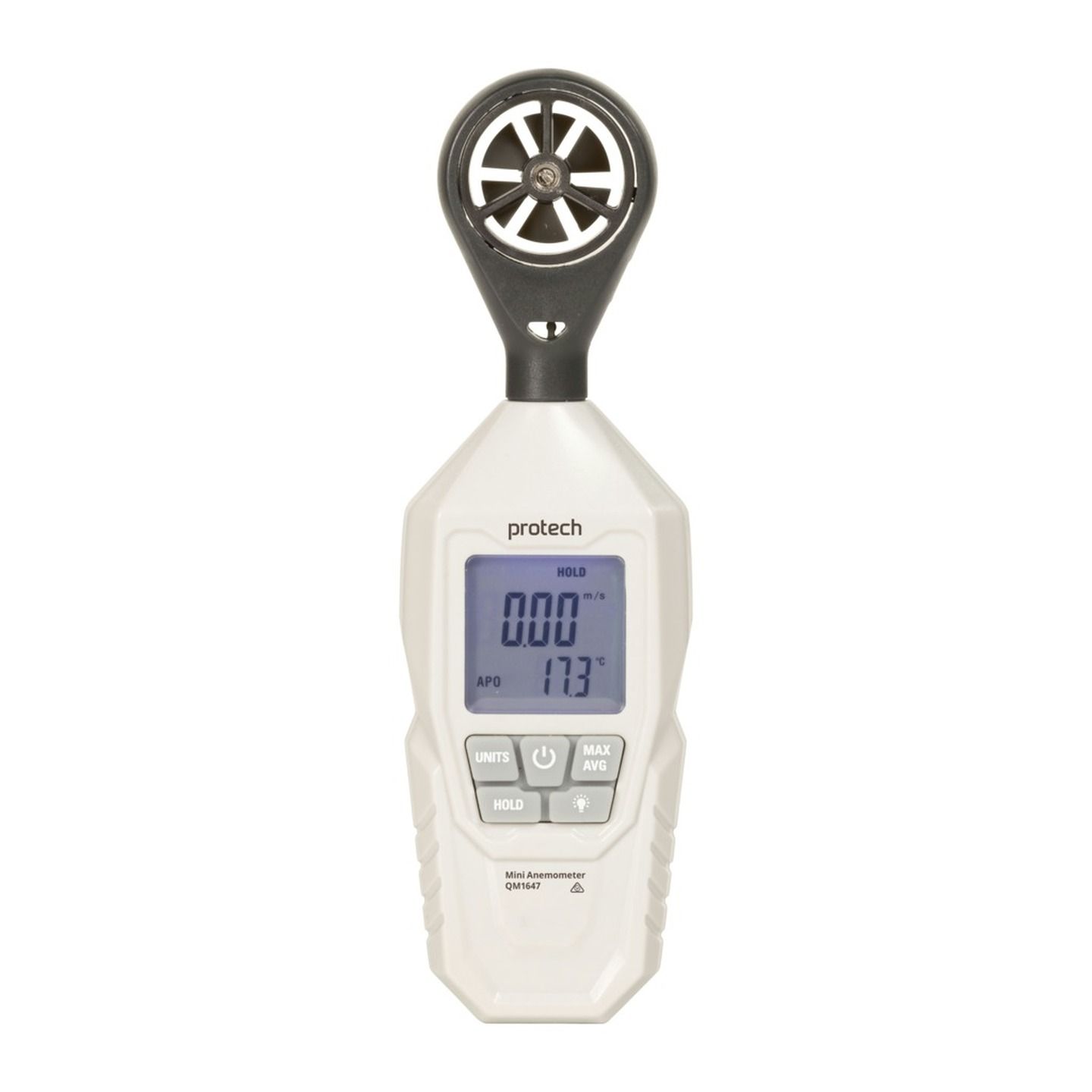All You Required to Find Out About Anemometers: Just How They Function, Why They Issue, and Where to Utilize Them
Anemometers, though frequently overlooked in the realm of scientific tools, play a crucial duty in different areas, supplying valuable understandings right into wind rate and airflow patterns. As we dive into the intricacies of anemometer innovation, we will certainly reveal the inner functions of these gadgets, their value, and the key considerations when choosing the ideal anemometer for particular applications.

Anemometer Basics
A vital instrument used to determine wind speed and direction, the anemometer plays a critical function in meteorology and different sectors. An anemometer usually consists of 3 or four cups that rotate in the wind, a vane that directs into the wind, and sensors to track the turnings or movements. By determining the rotations or movements over a specific period, the anemometer can determine wind speed. The vane assists establish wind direction by pointing into the wind, providing important information for weather condition projecting, air travel, maritime operations, ecological tracking, and wind power applications.
There are numerous sorts of anemometers available, consisting of cup anemometers, vane anemometers, hot-wire anemometers, and sonic anemometers, each with its one-of-a-kind features and applications. Mug anemometers are frequently made use of for standard wind speed measurements, while vane anemometers are liked for directional dimensions. Hot-wire anemometers appropriate for low airspeeds, and sonic anemometers are excellent for high-precision dimensions in research study and industrial settings. Understanding the basics of anemometers is essential for accurate wind data collection and analysis across different industries.
Principles of Anemometer Procedure
Structure on the fundamental understanding of anemometer essentials, the concepts of anemometer operation clarify the mechanics behind wind rate and instructions measurements. Anemometers operate the principle of air flow affecting a sensor, triggering it to rotate. Cup anemometers, as an example, have 3 or even more cups that catch the wind, causing them to rotate much faster as the wind speed rises. The turning speed is after that exchanged a wind rate measurement. Vane anemometers, on the various other hand, utilize a tail or a probe that straightens itself with the wind direction, offering a measurement of wind direction based upon the orientation of the sensing unit. Hot-wire anemometers rely upon a heated wire that cools down as wind passes over it, with the price of cooling figuring out the wind rate. Ultrasonic anemometers procedure wind speed and instructions by examining the moment it considers ultrasonic signals to take a trip in between transducers. Recognizing these concepts is vital for dependable and precise wind measurements in different applications.
Importance of Anemometers
Anemometers play a vital duty in determining wind rate and instructions, offering necessary data for weather forecasting, climate research studies, environmental tracking, and air travel operations. Meteorologists rely on anemometers to collect exact wind data, aiding them comprehend weather condition patterns, forecast tornados, and problem prompt cautions to the public. Wind ranch drivers make use of anemometers to evaluate wind problems and optimize electricity production from wind turbines.
Applications Throughout Various Industries
Applications of anemometers cover across varied markets, showcasing their convenience and utility beyond meteorology. In the renewable resource industry, anemometers play a vital function in evaluating wind conditions for wind ranch positionings, guaranteeing ideal power manufacturing. Industries like building and construction and mining use anemometers to keep an eye on wind Extra resources rates, vital for safety and security methods, particularly when functioning at elevations or in open-pit mines where solid winds can present hazards. Anemometers are likewise indispensable in the aeronautics market, aiding pilots in recognizing airspeed and wind direction for secure take-offs and touchdowns. The maritime sector benefits from anemometers for ship navigating, assisting seafarers expect weather condition adjustments and change routes accordingly. In agriculture, anemometers help farmers in taking care of crop spraying by offering real-time data on wind speed to stay clear of drift. Additionally, anemometers find applications in cooling and heating systems to enhance airflow and enhance energy effectiveness in buildings. The varied use situations of anemometers highlight their relevance across numerous sectors, highlighting their crucial duty in enhancing operational safety and security and effectiveness (anemometer).

Picking the Right Anemometer for Your Demands
For basic objectives, a mug anemometer is ideal for gauging wind speed, while a vane anemometer offers wind direction information. Hot-wire anemometers are optimal for low airspeed measurements, and ultrasonic anemometers use high precision and durability.

Conclusion
In conclusion, anemometers play an important role in gauging wind rate and direction throughout various markets. It is vital to think about the value of anemometers in order to make educated choices when choosing the most suitable gadget for measuring wind conditions.
There are different kinds of anemometers available, including cup anemometers, vane anemometers, hot-wire anemometers, and sonic anemometers, each with its distinct functions and applications. Mug anemometers read what he said are typically used for basic wind rate dimensions, while vane anemometers are favored for directional measurements. Hot-wire anemometers are suitable for low airspeeds, and sonic anemometers are perfect for high-precision measurements in research study and industrial settings.Building on the foundational understanding of anemometer fundamentals, the principles of anemometer procedure elucidate the auto mechanics behind wind rate and direction dimensions. For general functions, a mug anemometer is appropriate for determining wind rate, while a vane anemometer offers wind direction data.
Comments on “Why an Anemometer is Important for Your Environmental Information Collection”